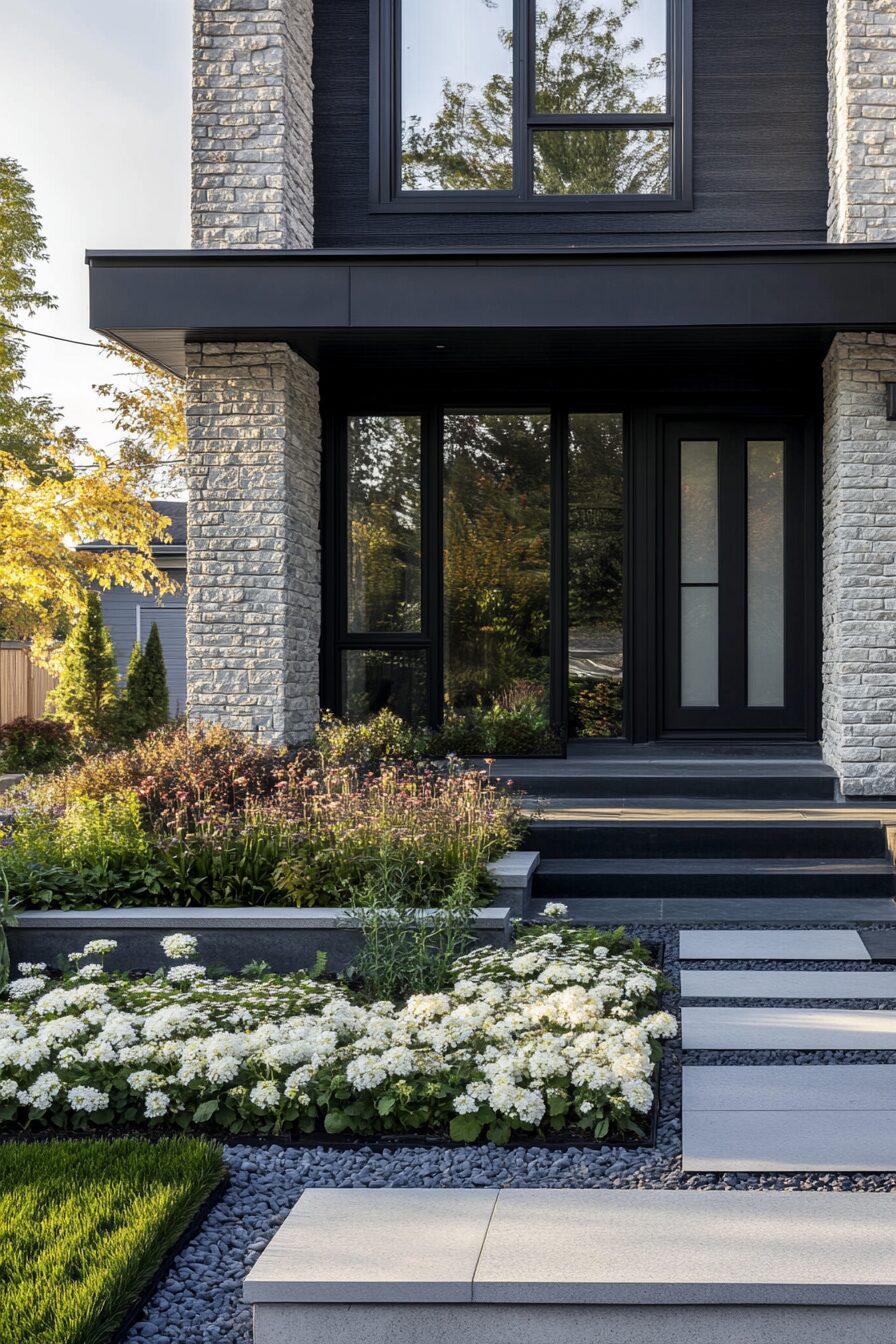Ever looked at your garden and felt something was missing?
That “wow” factor that makes neighbors slow down when walking past your house?
The secret might be in your flower beds – those versatile, transformative garden elements that can turn any outdoor space from boring to breathtaking without breaking the bank.
When designed thoughtfully, flower beds can become the cornerstone of your landscape, bringing color, texture, and life to your property year-round.
✨Click to Get My 101 FREE Designer Room Ideas
Layered Flower Beds for Stunning Depth and Dimension
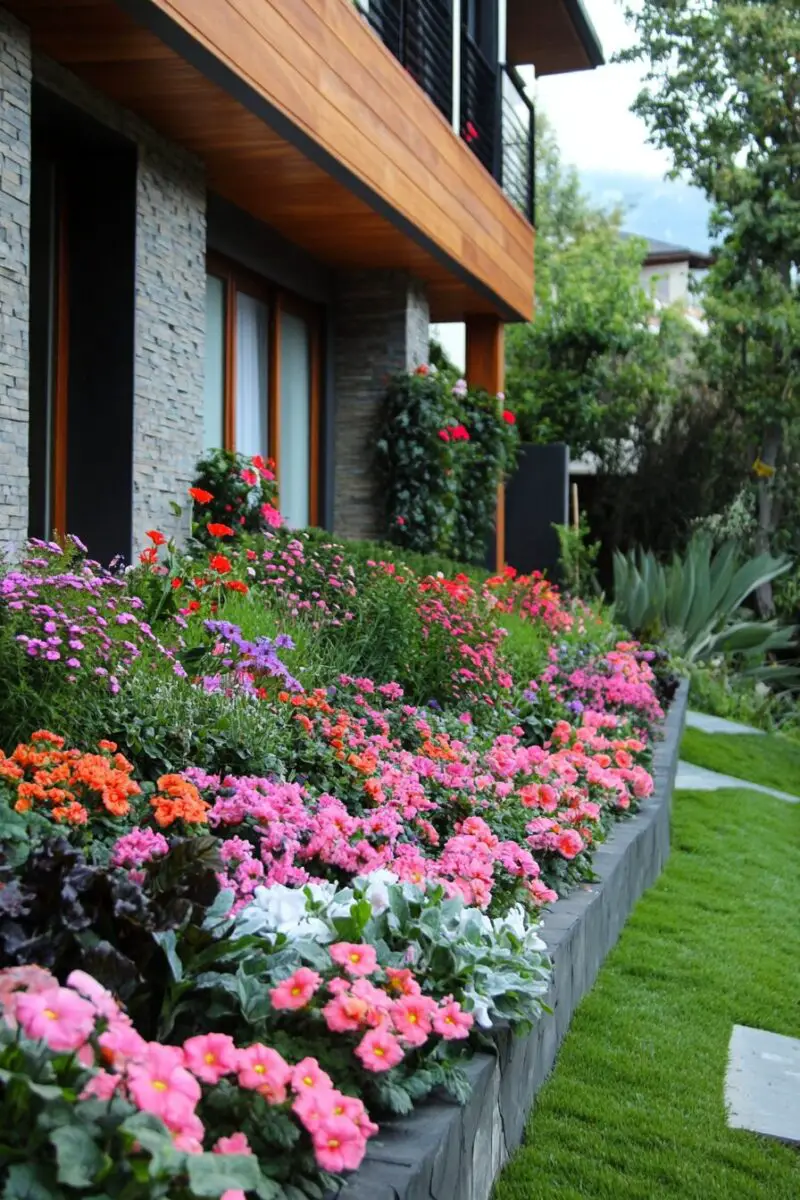
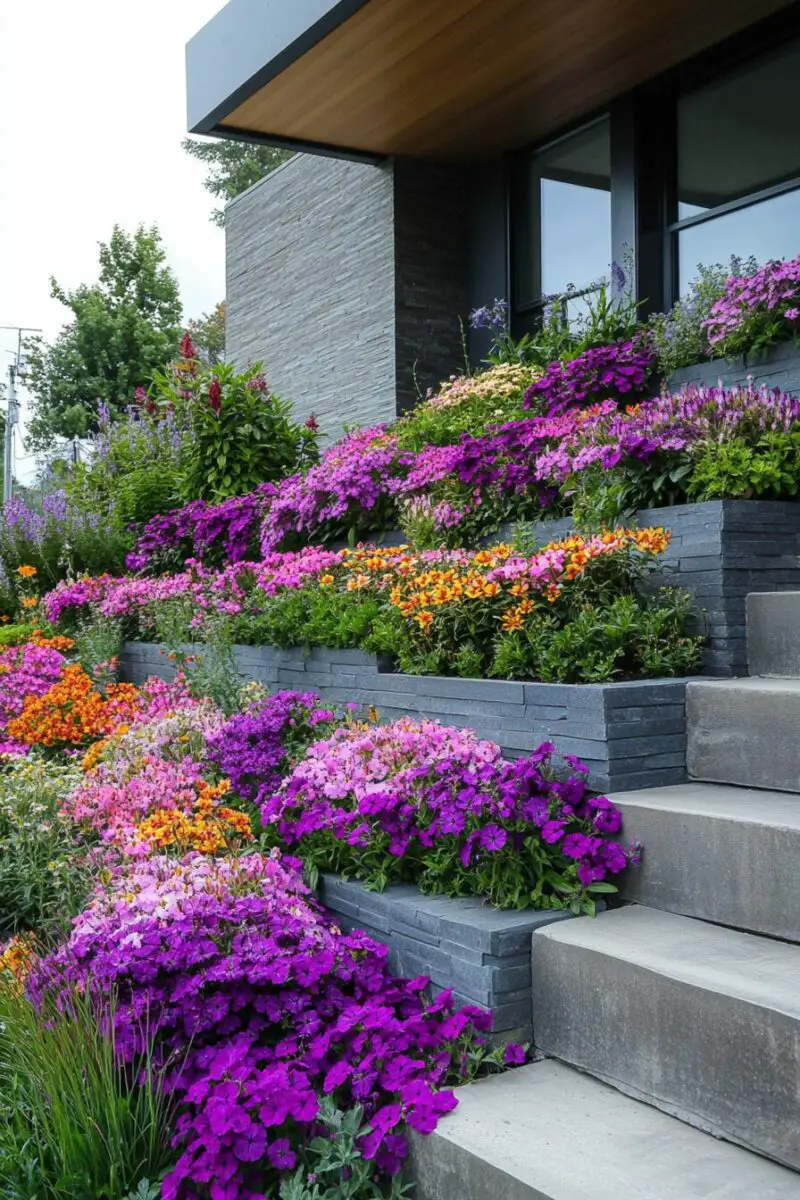
Forget flat, one-dimensional garden designs that fall flat visually.
Layered flower beds create a theatrical display that draws the eye through multiple planes, creating interest from every angle.
The key to successful layered beds lies in understanding plant heights and blooming seasons, arranging them so taller plants sit behind shorter ones without blocking sunlight or visual appeal.
Start by placing your tallest specimens (ornamental grasses, hollyhocks, or delphinium) at the back of borders or center of island beds, creating a dramatic backdrop.
Mid-height plants like salvia, coneflowers, and dahlias form your middle ground, bridging the visual gap between tall and short elements.
Edge your beds with low-growing spreaders such as alyssum, creeping phlox, or trailing verbena that soften hard borders and spill slightly onto pathways.
The magic happens when you plan for continuous visual interest through the seasons, ensuring something is always peaking as other plants fade.
For maximum impact, incorporate plants with contrasting foliage textures – pairing feathery ferns against broad-leafed hostas or spiky ornamental grasses alongside rounded boxwood.
This dimensional approach transforms flat landscapes into garden spaces with depth, encouraging exploration and discovery as different plants take the spotlight throughout the growing season.
Layer in bulbs at various depths when planting to ensure spring surprises emerge before your perennials have fully awakened.
This strategic approach ensures your garden maintains visual interest from the earliest spring snowdrops through late-fall asters.
Natural Wildflower Meadow Beds for Eco-Friendly Appeal

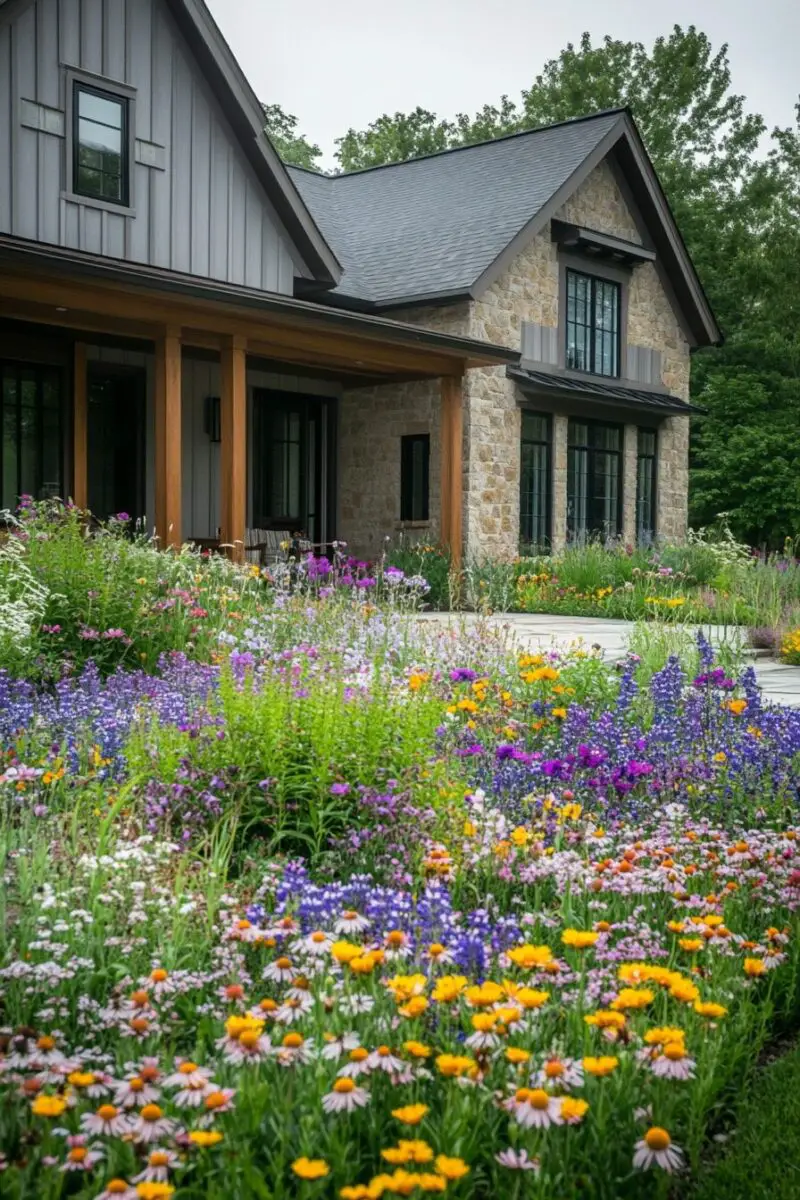
Ditch the perfectly manicured look and embrace the charming chaos of a wildflower meadow bed.
These naturalistic plantings aren’t just visually spectacular – they’re biodiversity powerhouses that support local ecosystems while requiring minimal intervention.
Getting started with a wildflower bed begins with selecting native species adapted to your specific region, ensuring they’ll thrive with little supplemental water or fertilizer once established.
Popular meadow flowers like echinacea, black-eyed Susans, bee balm, and native grasses create an ever-changing tapestry throughout the growing season.
The true beauty of wildflower beds lies in their deliberate randomness – the intermingling of different heights, bloom times, and colors creates a dynamic display that evolves weekly.
Prepare your meadow bed by removing existing turf and weeds, then loosely scatter seed mixes formulated for your growing zone, gently pressing them into the soil without burying them too deeply.
During the first season, you’ll need to provide some supplemental water until roots establish, but patience is key – many wildflowers invest in root development before putting on their best floral display.
The maintenance approach differs dramatically from traditional beds – simply cut back once annually in late winter rather than deadheading and dividing throughout the season.
Resisting the urge to tidy is perhaps the biggest challenge for convert gardeners, as seed heads and winter stems provide crucial habitat for beneficial insects and food sources for birds.
Wildflower beds showcase seasonal shifts beautifully, from the fresh greens of spring to the golden seed heads of autumn, connecting your garden to the wider natural cycles.
This juxtaposition of wild and controlled elements signals to neighbors that your natural approach is deliberate, not neglectful – an important distinction in more traditional neighborhoods.
Multi-Functional Raised Flower Beds with Built-In Features
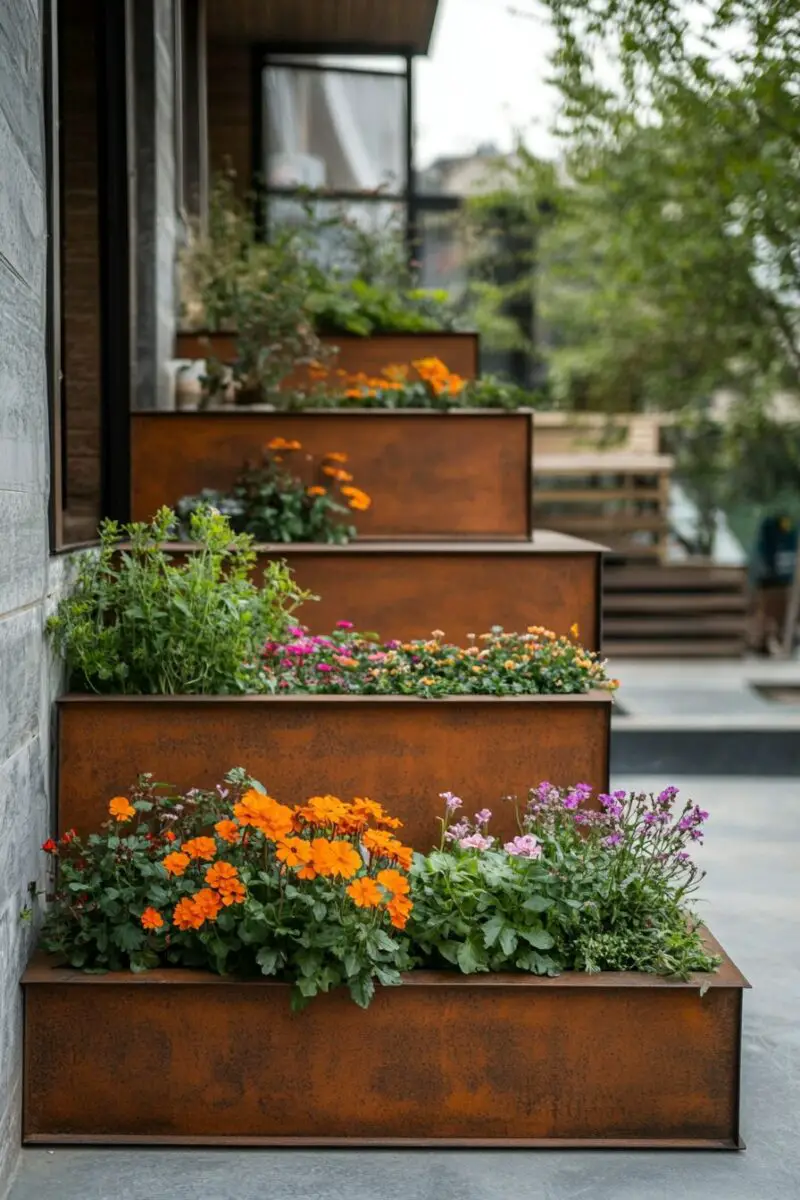
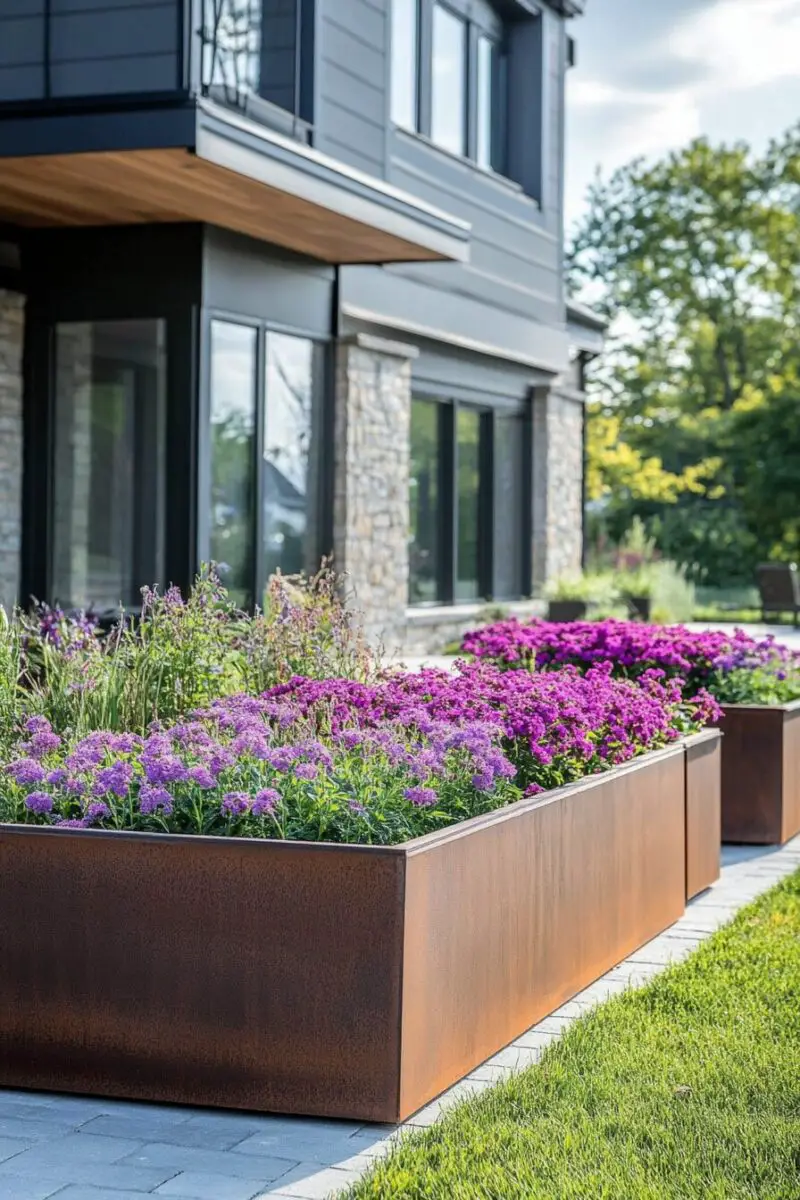
Transform ordinary raised beds into multi-tasking garden features that solve problems while delighting the eye.
These elevated planting areas offer perfect growing conditions while incorporating practical elements like seating, storage, or even water features into their design.
The elevated soil profile of raised beds warms earlier in spring, allowing for extended growing seasons and creating perfect conditions for plants that demand excellent drainage.
Materials choice dramatically impacts both aesthetics and functionality – cedar and redwood offer natural durability, while composite materials provide longevity without maintenance, and stone or brick create permanent features with timeless appeal.
Thoughtfully designed corners can incorporate hidden storage for garden tools, create space for integrated lighting, or house self-watering systems that simplify summer maintenance.
For maximum visual impact, design raised beds with varying heights, creating a terraced effect that showcases different plant collections while making maintenance more back-friendly.
Wheelchair accessibility becomes possible when raising beds to the perfect 24-30 inch height, making gardening accessible for those with mobility challenges.
Strategic placement allows raised beds to serve as natural dividers between outdoor rooms, creating distinct spaces for dining, relaxing, and play areas within your landscape.
Curved edges soften the visual impact of raised beds and create more natural-looking garden spaces compared to rigid rectangular designs.
Plants that cascade over the edges – like trailing nasturtiums, creeping thyme, or wave petunias – help integrate raised beds into the surrounding landscape, ensuring they enhance rather than dominate your garden design.
Bold Monochromatic Color Scheme Flower Beds
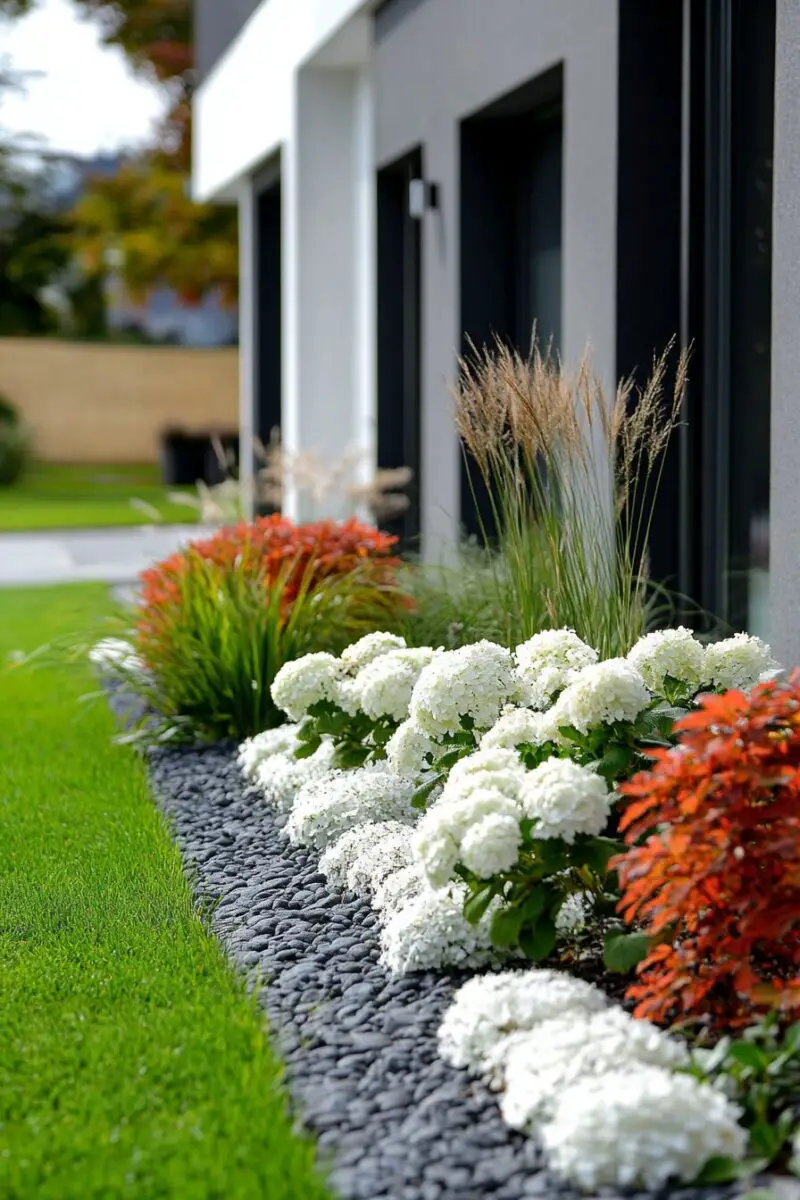
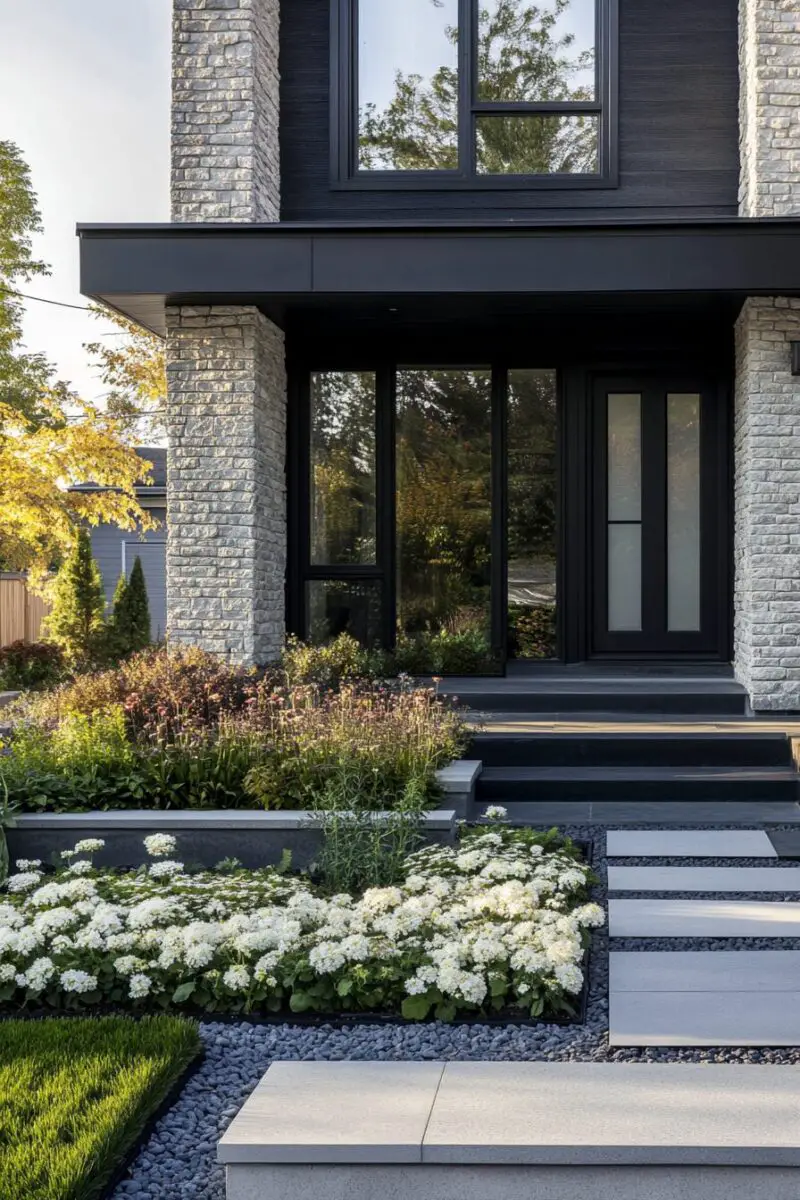
Forget rainbow-colored gardens that lack cohesion – monochromatic flower beds deliver sophisticated drama through the power of color psychology.
These single-color plantings create unmistakable visual impact while demonstrating gardening restraint and design confidence.
White monochromatic beds bring ethereal luminosity to shaded areas, seeming to glow at dusk when flowers like moon vine, white cosmos, and snowdrift roses capture and reflect available light.
Blue-themed beds create tranquil, cooling spaces perfect for meditation gardens, featuring delphiniums, hydrangeas, salvias, and forget-me-nots in varied shades from pale sky to deep navy.
Red monochromatic gardens command attention and energize spaces, combining cardinal flower, bee balm, canna lilies, and Japanese maples for a bold statement that draws the eye immediately.
The secret to successful single-color gardens lies in varying the intensity of your chosen hue, incorporating everything from pale tints to deep saturated tones within your selected color family.
Texture becomes paramount when working within a limited color palette, with plant selection focusing on contrasting leaf shapes, sizes, and surface qualities to maintain visual interest.
Yellow monochromatic beds create sunny, cheerful spaces even on cloudy days, combining gold-hued coreopsis, sunflowers, black-eyed Susans, and goldenrod for continuous warmth.
Purple gardens exude luxury and mystery, with lavender, allium, verbena, and purple smoke bush creating royal displays that range from soft lilac to deep aubergine throughout the season.
Foliage plays a crucial role in maintaining your color theme between bloom cycles, with plants like heuchera, Japanese forest grass, and coleus offering consistent coloration regardless of flowering status.
The disciplined approach of color-themed beds creates cohesive, professional-looking gardens that photograph beautifully and demonstrate an elevated understanding of design principles anyone can achieve with thoughtful planning.
✨Click to Get My 101 FREE Designer Room Ideas
Drought-Resistant Xeriscape Flower Beds
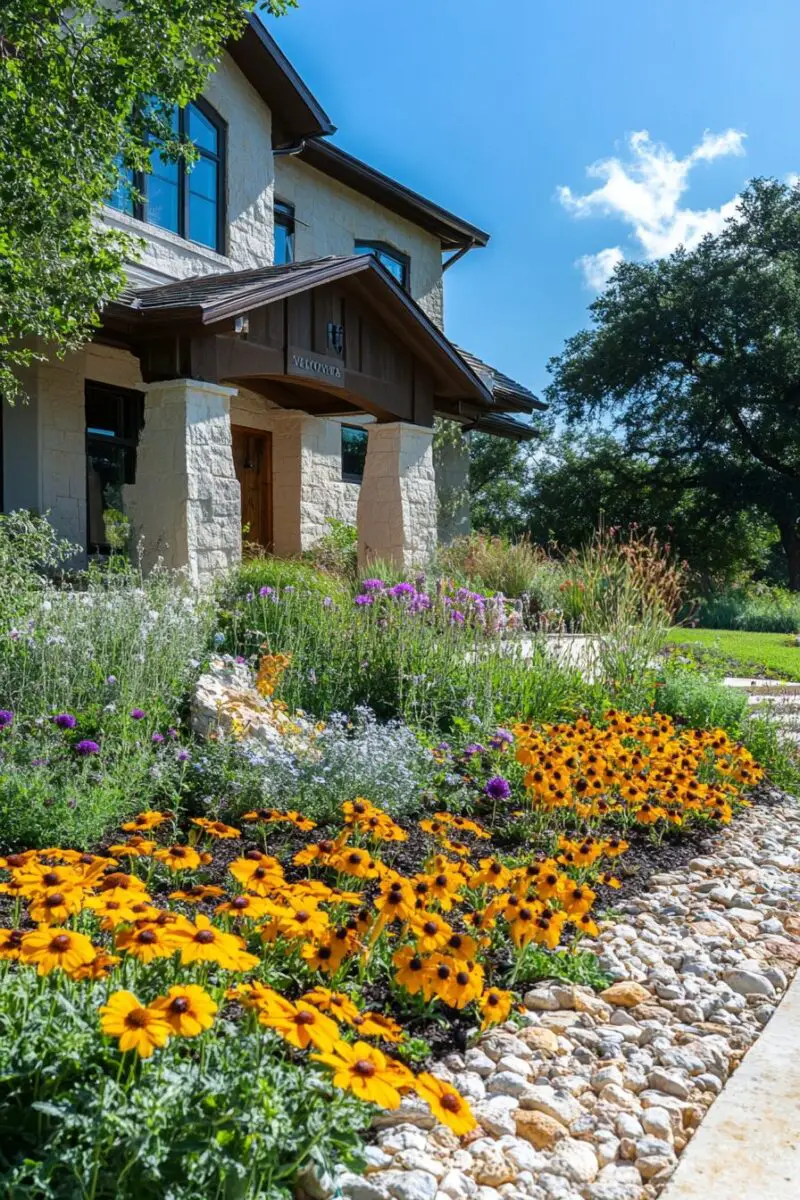
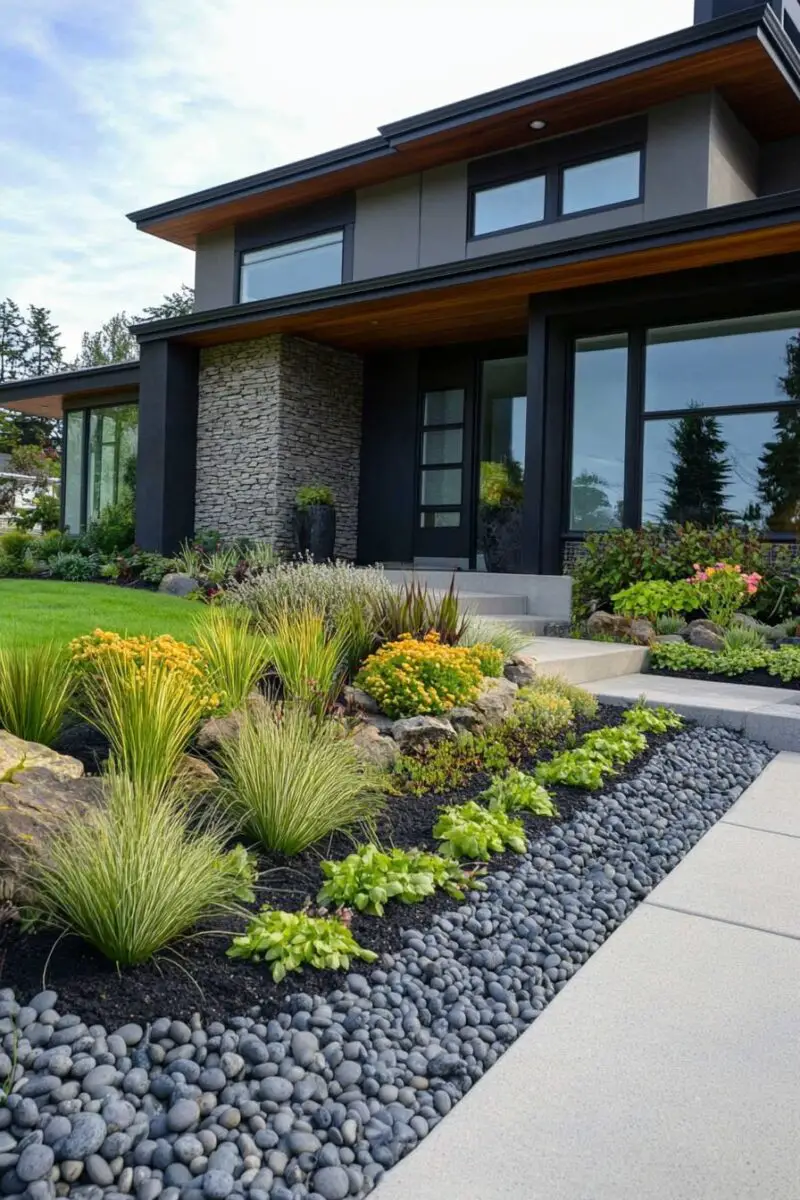
Transform water-guzzling garden spaces into stunning, environmentally-responsible xeriscaped flower beds that thrive despite rainfall challenges.
These water-wise plantings combine striking aesthetics with practical resource conservation, perfect for regions facing water restrictions or gardeners seeking lower maintenance options.
The fundamental principle of xeriscaping isn’t about creating a barren, cacti-filled landscape, but rather selecting plants naturally adapted to your specific climate that can thrive with minimal supplemental irrigation.
Begin your xeriscape bed by improving soil structure with organic matter that retains moisture while still providing excellent drainage – the foundation of successful drought-tolerant plantings.
Incorporate hardscaping elements like decorative gravel, dry creek beds, or strategically placed boulders to reduce planted areas while adding year-round visual interest and texture.
Group plants with similar water requirements together, creating hydrozones that allow for targeted irrigation only where absolutely necessary during establishment or extreme conditions.
Ornamental grasses like feather reed grass, blue fescue, and muhly grass become starring players in xeriscape beds, providing movement, seasonal color changes, and drought resilience.
Flowering perennials including Russian sage, yarrow, blanket flower, and echinacea offer reliable blooms despite challenging conditions, attracting pollinators while requiring minimal care.
Create year-round structure with architectural succulents such as agave, yucca, and larger sedums that provide distinctive silhouettes even during dormant seasons.
Apply 2-3 inches of organic mulch to retain soil moisture, suppress weeds, and gradually improve soil quality as it breaks down over time.
The beauty of well-designed xeriscape beds evolves seasonally, from spring’s fresh growth to summer’s resilient blooms to fall’s dramatic seed heads and winter’s structural elements – all without demanding constant watering attention.
Space-Maximizing Vertical Flower Beds

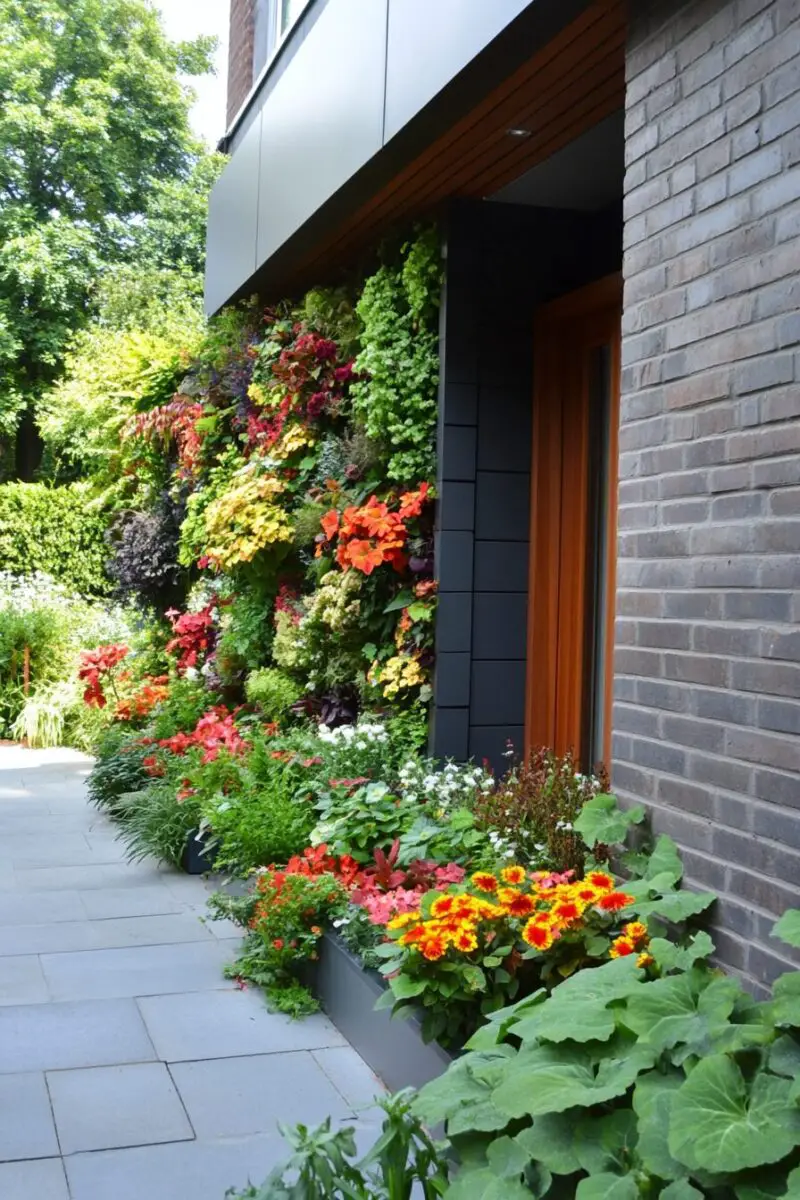
Limited ground space doesn’t mean limiting your garden dreams when you embrace the vertical dimension with wall-mounted, hanging, and climbing flower displays.
These upward-reaching gardens transform blank walls, fences, and even balcony railings into flourishing flower showcases that multiply your planting area.
Start by assessing your vertical spaces – south-facing walls provide perfect conditions for sun-loving climbers, while north-facing surfaces suit shade-tolerant ferns and woodland flowers.
Purpose-built structures like trellises, arbors, and obelisks create instant vertical gardening opportunities, while repurposed elements like old ladders, pallets, or window frames add vintage charm.
Living walls (sometimes called green walls) represent the ultimate vertical garden, using modular systems with built-in irrigation to create stunning tapestries of color and texture.
Trailing plants like wave petunias, creeping phlox, and cascading geraniums transform ordinary hanging baskets into dramatic curtains of color when strategically placed at varying heights.
For edible options, consider vertical plantings of nasturtiums, climbing miniature pumpkins, or scarlet runner beans that provide flowers, food, and impressive vertical coverage.
Climbing roses trained on sturdy supports create traditional vertical impact, while annual morning glories or moonflower vines offer quicker coverage with minimal investment.
Pocket planters mounted to walls or fences allow for seasonal rotation of compact flowering plants, bringing eye-level interest to previously unused vertical surfaces.
For rental properties or temporary situations, freestanding vertical structures like shepherd’s hooks, plant stands, or decorative ladders provide height without permanent installation.
Maintenance becomes easier with thoughtfully designed vertical gardens that include accessible watering systems and strategic placement allowing for deadheading and care without awkward reaching or ladder balancing.
Seasonal Rotation Border Flower Beds
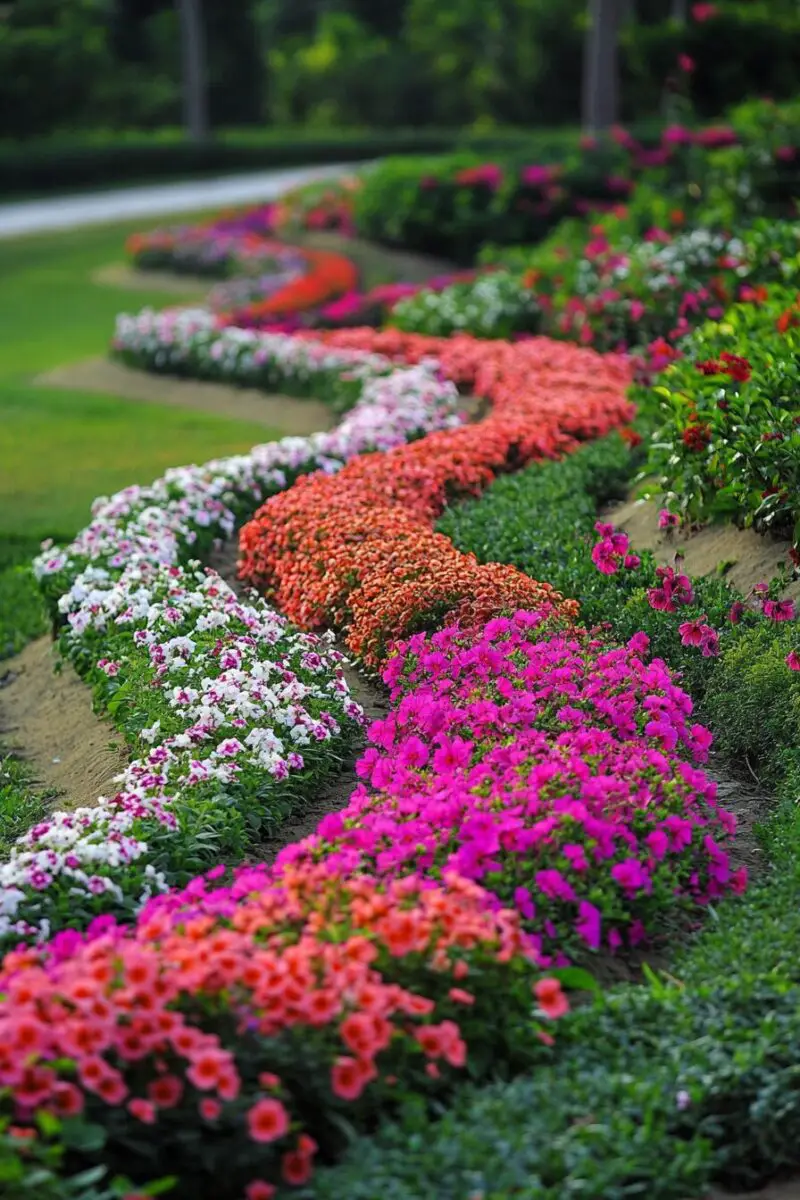

Banish garden boredom forever with carefully planned border beds designed for continuous, changing displays throughout the entire growing season.
These dynamic plantings ensure your garden never experiences dormant periods, with new waves of color emerging as previous stars fade away.
The foundation of successful seasonal rotation begins with understanding bloom times and planning backward from your climate’s first and last frost dates.
Early spring bulbs like snowdrops, crocus, and early daffodils can be layered beneath later-emerging perennials, utilizing the same physical space for multiple bloom cycles.
Cool-season annuals including pansies, snapdragons, and sweet alyssum bridge the gap between spring bulbs and summer perennials, thriving in the moderate temperatures of transitional seasons.
Summer’s glory depends on heat-loving performers such as coneflowers, rudbeckia, salvias, and dahlias that maintain interest during the longest growing period.
Plan for the often-neglected late season with fall asters, Japanese anemones, toad lilies, and ornamental grasses that peak just as earlier performers begin to fade.
Winter interest comes from structural elements like ornamental seed heads, colorful stems (think red-twig dogwood), and evergreen components that maintain garden architecture during dormancy.
Careful color planning ensures harmonious transitions between seasonal displays – perhaps cool blues and whites in spring, transitioning to warmer yellows and oranges in summer, culminating in rich purples and rusts for autumn.
Document your garden’s progression with photos and notes, allowing for thoughtful adjustments in subsequent years as you refine your sequential displays.
The joy of seasonal rotation beds lies in their ever-changing nature – greeting you with fresh colors, textures, and fragrances that celebrate the unique character of each season rather than fighting against natural cycles.
Enchanting Night Garden Flower Beds
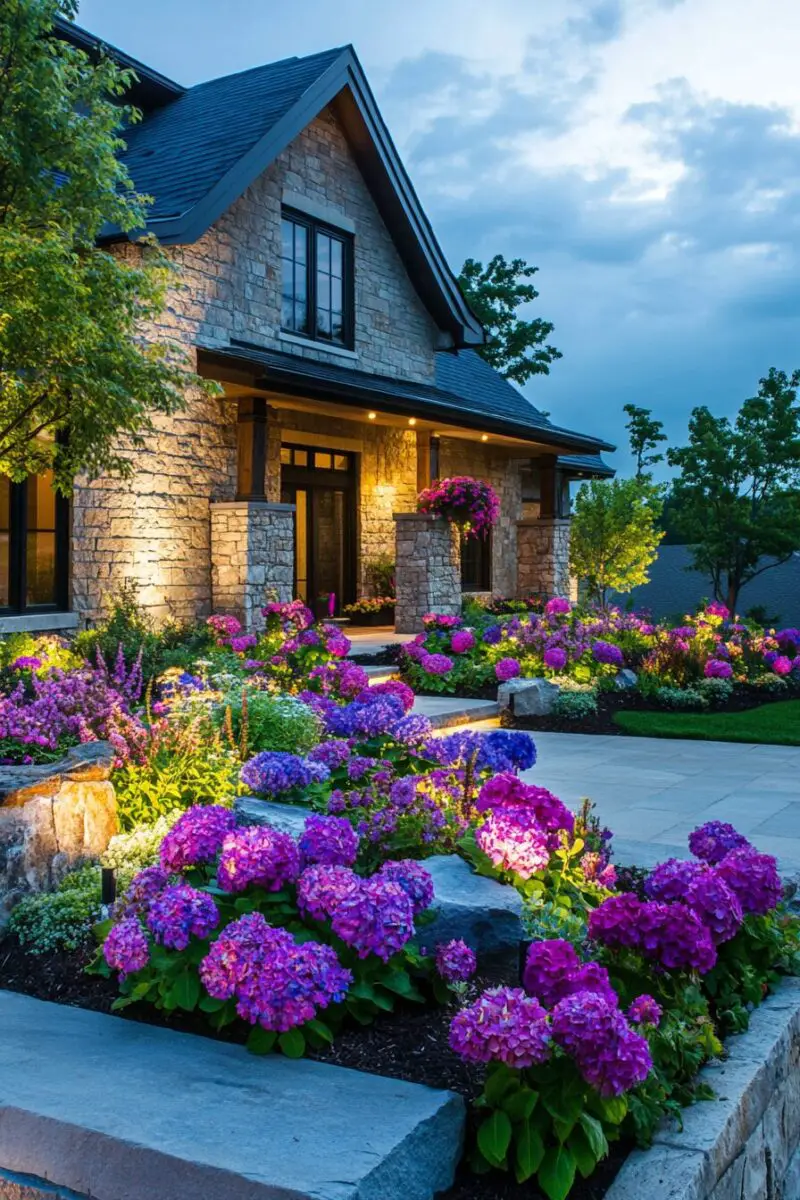
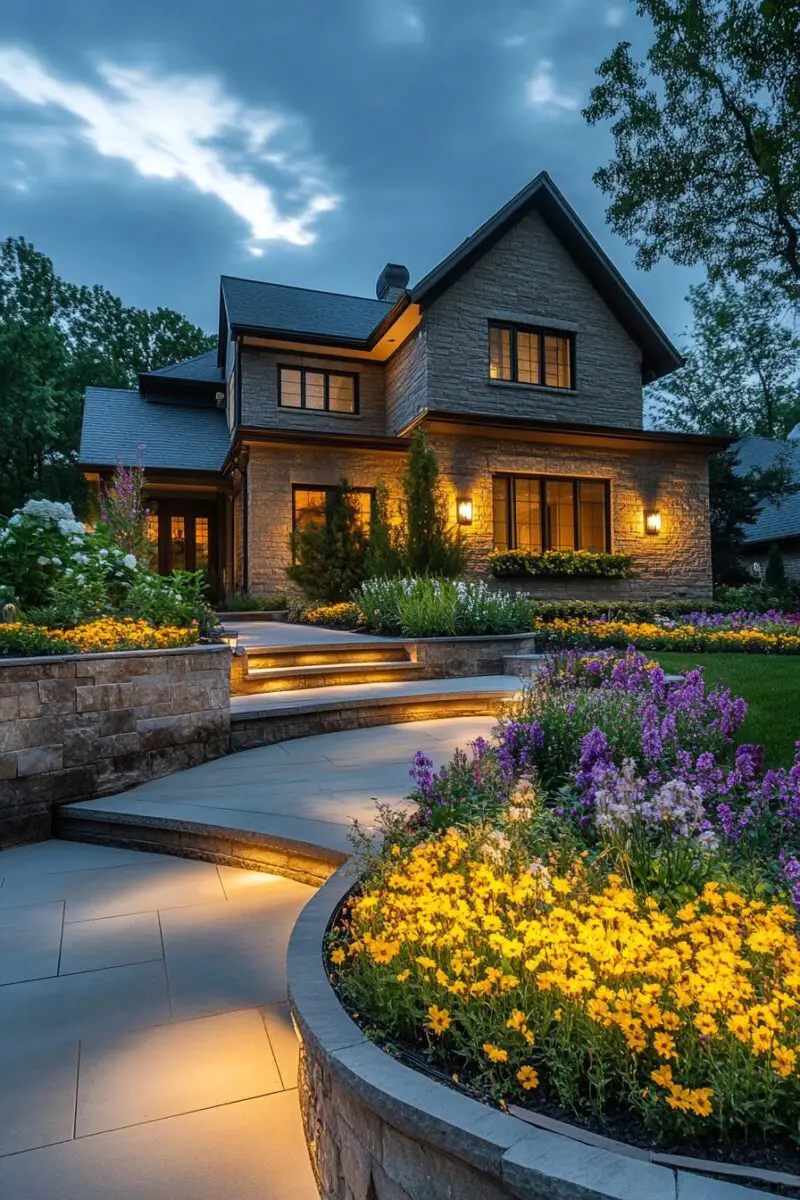
Transform your outdoor space into a magical evening retreat with flower beds specifically designed to come alive after sunset.
These moonlight gardens combine light-reflective blooms, evening fragrance, and subtle lighting to create enchanted spaces perfect for twilight enjoyment.
White and pale-colored flowers form the backbone of night gardens, reflecting available moonlight and creating luminous glows that seem to float in darkened spaces.
Evening-blooming plants like moon flower, night-scented stock, and evening primrose add dynamic elements that unfurl as the sun sets, providing botanical performances for evening enjoyment.
Fragrance becomes heightened in night gardens, with nocturnal pollinators drawn to the intense perfumes of nicotiana, night-blooming jasmine, and evening phlox that might go unnoticed during daylight hours.
Strategic placement near patios, decks, or bedroom windows maximizes enjoyment of evening gardens, bringing their sensory pleasures to spaces you naturally occupy during twilight hours.
Incorporate reflective elements like gazing balls, small water features, or metallic garden ornaments that capture and amplify limited evening light sources.
Silver-leaved plants including artemisia, dusty miller, and lamb’s ears appear to glow in moonlight, creating structural elements visible throughout the night garden.
Plan pathways with light-colored gravel or stepping stones that remain visible after dark, ensuring safe navigation through your evening flower beds.
Include plants with interesting silhouettes like ornamental grasses, alliums, or angelica that create distinctive shapes against the night sky when backlit by landscape lighting.
The magical transformation that occurs as day transitions to evening creates two distinct garden experiences in the same physical space – a practical consideration for time-pressed gardeners seeking maximum enjoyment from limited garden time.
✨Click to Get My 101 FREE Designer Room Ideas
Pollinator Paradise Flower Beds
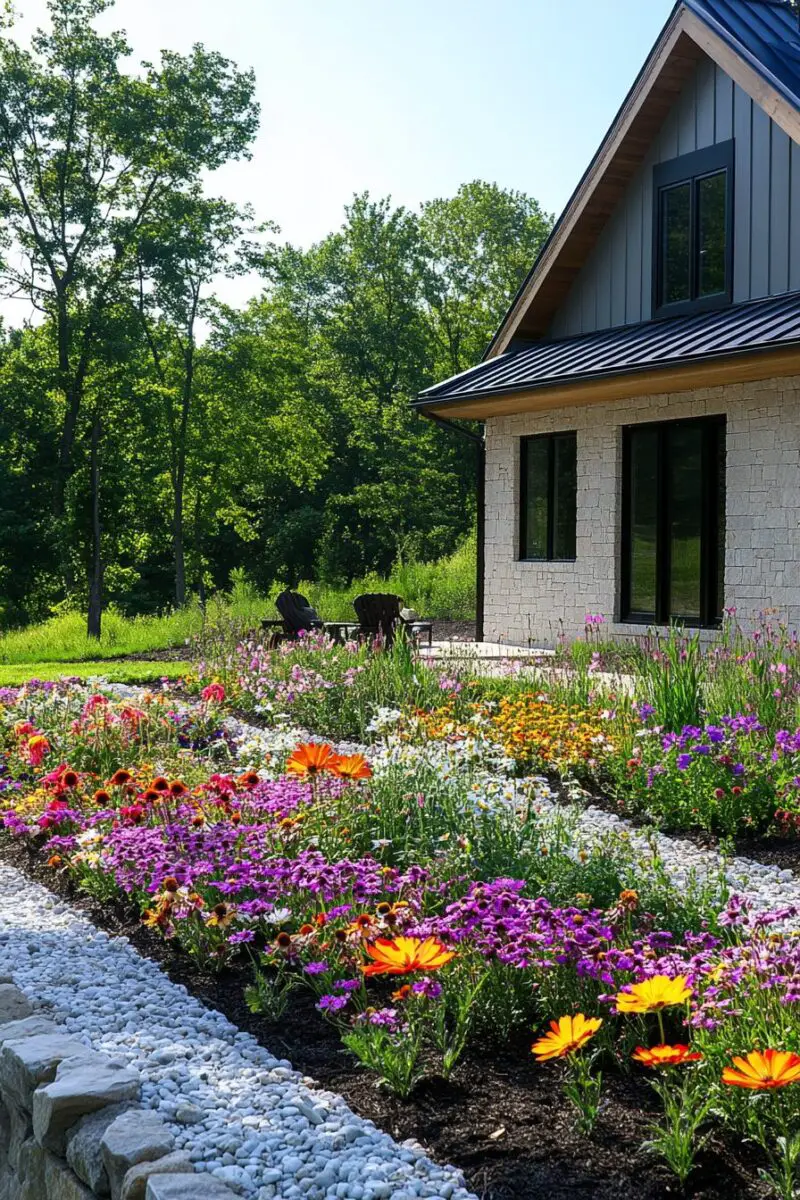
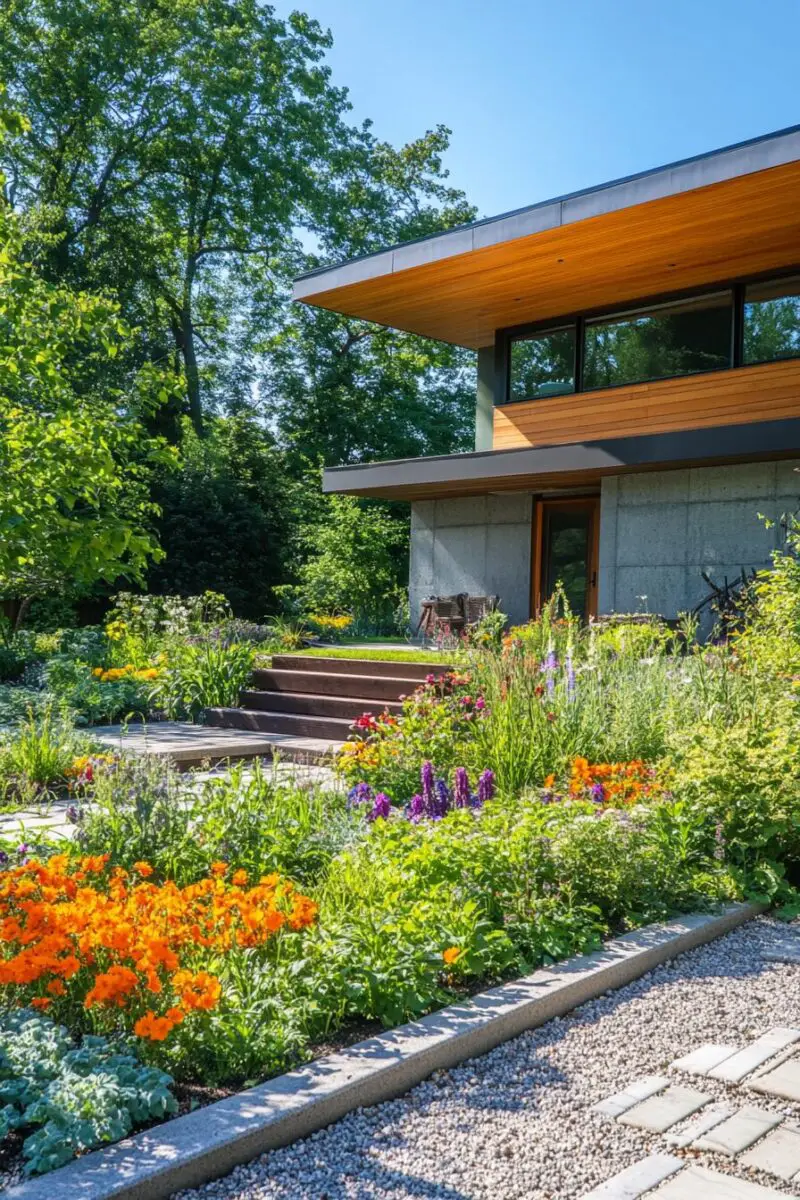
Design flower beds that double as essential wildlife habitats, supporting declining bee, butterfly, and beneficial insect populations while creating vibrantly alive garden spaces.
These buzzing, fluttering beds transform your landscape from mere decoration into functioning ecosystems that connect your property to the greater natural world.
Begin with a diverse plant palette featuring natives when possible, as these plants have co-evolved with local pollinator species and provide the most appropriate food sources.
Aim for continuous blooming by choosing plants with sequential flowering periods, ensuring nectar and pollen sources remain available from early spring through late fall.
Incorporate butterfly host plants like milkweed, parsley, and dill alongside nectar sources, providing complete lifecycle support rather than just adult feeding stations.
Create landing pad flowers of different sizes to accommodate various pollinator species – large flat flowers like echinacea and rudbeckia for butterflies, and clusters of tiny blooms for smaller beneficial insects.
Allow some areas to remain slightly untidy, with leaf litter and hollow stems providing crucial overwintering habitat for native bees and beneficial insects that need shelter during dormant periods.
Include shallow water sources with landing spots where bees and butterflies can safely drink without drowning – essential during hot summer months.
Avoid all pesticide use in pollinator gardens, embracing the occasional nibbled leaf as evidence of a functioning food web rather than a problem requiring intervention.
Group similar flowers in generous drifts rather than scattered individual plants, creating highly visible target areas that help pollinators forage more efficiently and conserve precious energy.
The dynamic nature of pollinator gardens, with constant movement and activity, creates living landscapes that engage all senses and connect gardeners to seasonal rhythms and natural processes in deeply satisfying ways.
No-Fuss Perennial Flower Beds for Busy Gardeners
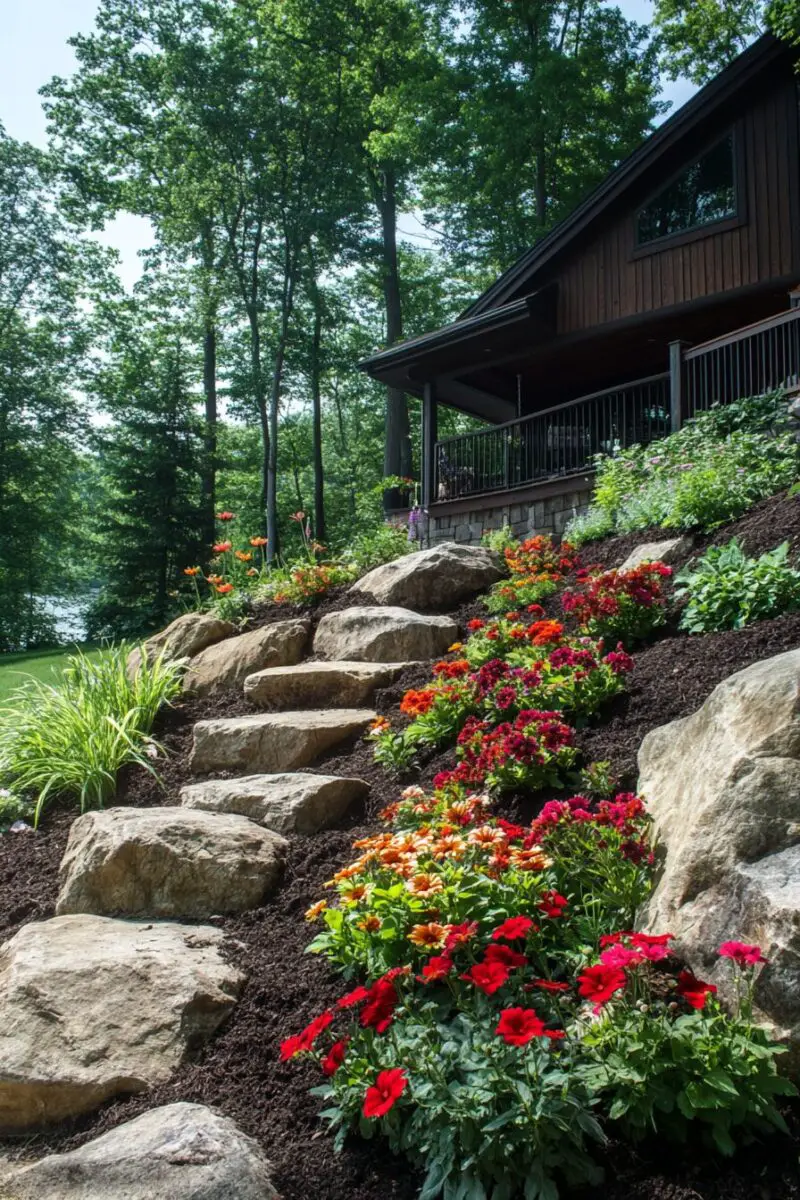

Reclaim your weekends while still enjoying spectacular garden displays with strategically designed low-maintenance perennial beds requiring minimal intervention.
These hardworking plantings deliver maximum visual impact with minimum time investment, perfect for busy lifestyles or gardeners seeking to reduce physical labor.
Begin by selecting tough, long-lived perennials with minimal disease issues – plants like daylilies, coneflowers, Russian sage, and ornamental grasses that thrive despite neglect.
Group plants with similar water requirements together, eliminating micromanagement of irrigation and allowing for efficient watering systems that target specific areas appropriately.
Incorporate slow-growing compact shrubs like dwarf spirea, small hydrangeas, or compact evergreens that provide structural elements without constant pruning needs.
Space plants with mature size in mind, allowing room for full development without creating maintenance-intensive crowding that requires regular division.
Apply 3-4 inches of quality mulch annually, dramatically reducing weeding requirements while improving soil quality and moisture retention over time.
Choose self-cleaning varieties that don’t require deadheading to continue blooming, such as newer echinacea cultivars, certain daylily varieties, and many modern roses.
Install permanent edging that creates clear boundaries between lawn and flower beds, eliminating time-consuming edge trimming and preventing grass invasion.
Embrace plants that improve with maturity rather than those requiring frequent division to maintain vigor, allowing your garden to develop appealing permanence over time.
The beauty of well-designed low-maintenance beds lies not in their wildness but in their thoughtful composition – carefully selected plants that naturally complement each other while requiring minimal human intervention to shine.
These flower bed ideas offer something for every gardener, property type, and climate zone – proving that beautiful, functional gardens are within everyone’s reach.
The key to success lies not in following trends blindly but in adapting these concepts to your specific conditions, preferences, and lifestyle needs.
Remember that gardens are ever-evolving spaces that improve with time, so start implementing these ideas gradually, documenting your progress, and enjoying the journey as your outdoor space transforms into the garden of your dreams.

